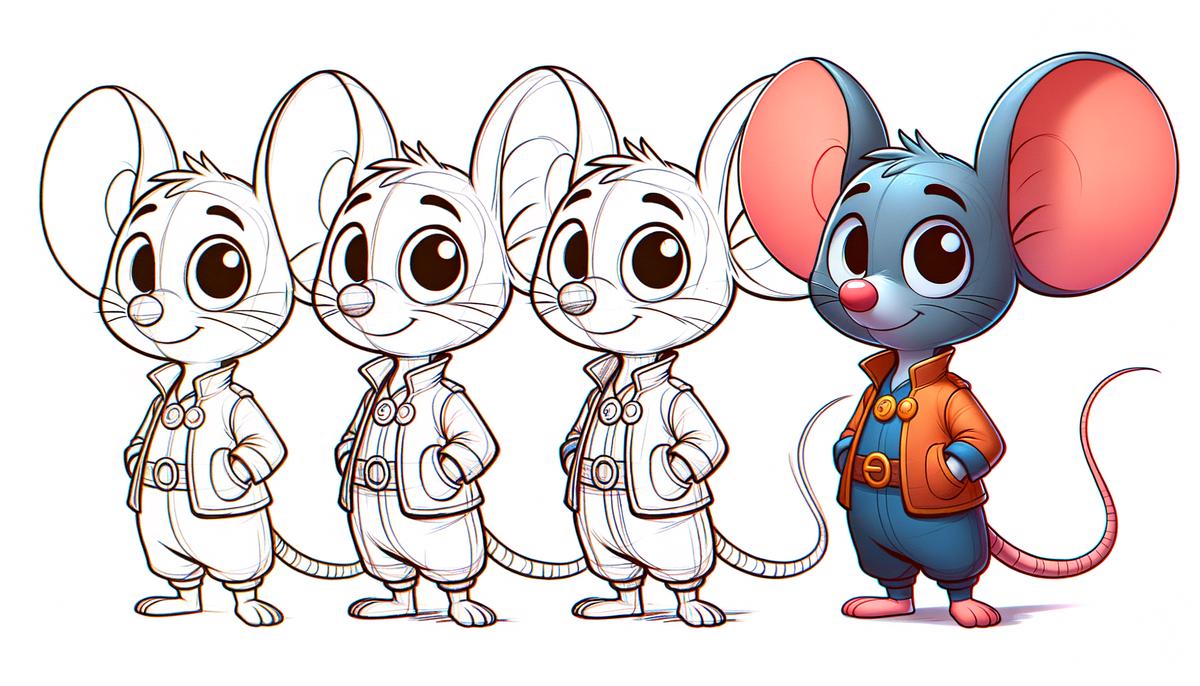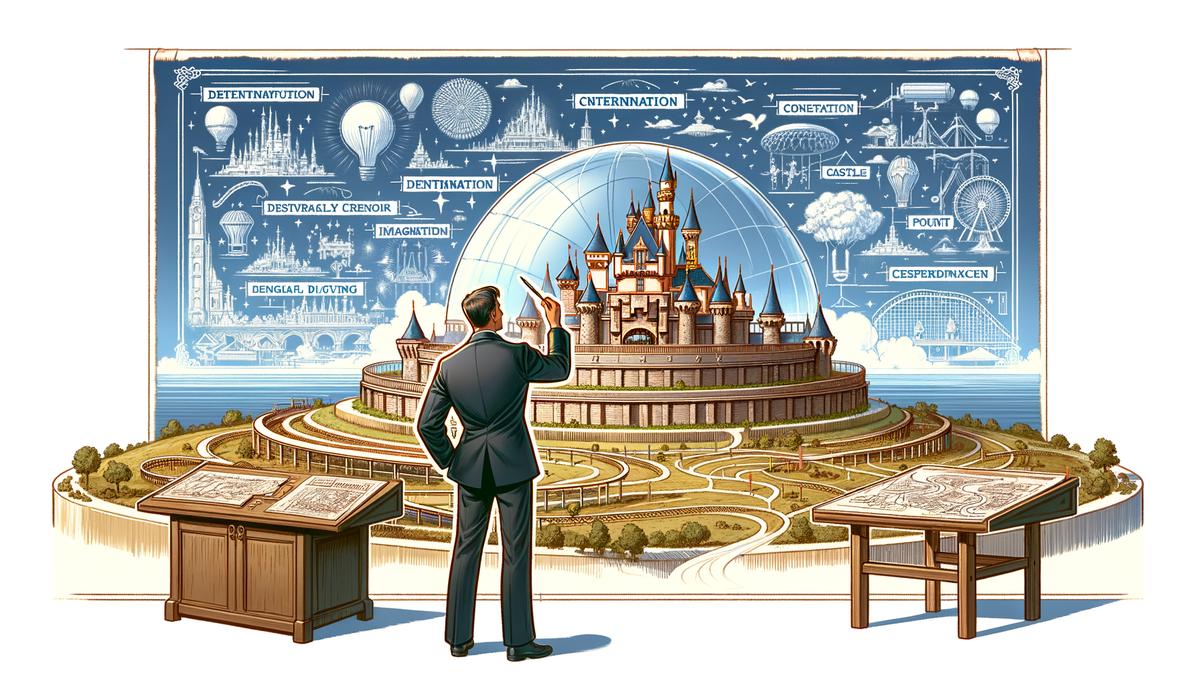Walt Disney’s story is a fascinating exploration of how creativity, resilience, and innovation can lead to extraordinary achievements. From his humble beginnings to becoming a household name, Disney’s life was filled with moments that highlight the power of imagination and hard work. This article aims to shed light on the various aspects of his life that contributed to his success, offering insights into the man behind the magic.
Early Life and Inspirations
Walt Disney, a name synonymous with animation, creativity, and timeless stories, didn’t just emerge as a visionary overnight. His journey from a young boy to the pioneering force behind the Disney empire is a tale of perseverance, imagination, and a sprinkle of life’s unexpected twists. So, what shaped the young Walt Disney into the legend we celebrate today?
Growing up in the early 1900s, Walt’s life was filled with the typical chores and responsibilities of rural living. Yet, it was his early exposure to drawing and painting that sparked the first flickers of his creative fire. As a child, he would doodle on the side of his family’s house with tar, not just marks on a wall, but the beginnings of a lifelong dedication to art. Despite these early interests, Walt’s path wasn’t straightforward. Financial difficulties meant that his family moved around, and Walt had to shoulder his share of hard work from a young age.
However, adversity didn’t quell Walt’s creative spirit. Instead, it seemed to fuel it. After moving to Kansas City, Walt stepped into the world of paper routes and petty jobs. Yet, amongst the toil, he found solace and inspiration in the world of trains. His uncle was a train conductor, and Walt would often sell snacks and newspapers to travelers. This experience exposed him to various stories and characters, sowing the seeds of storytelling that would later bloom into his animated creations.
But where did the technical skill come from? Walt took his first step into professional artistry with a correspondence course in cartooning during his high school years. Though this was a solitary pursuit, it laid the groundwork for his understanding of the animation process. Later, shifts in his family dynamic and financial need pushed him towards a temporary departure from high school to drive an ambulance for the Red Cross during World War I. Although distant from the world of art during this time, he adorned his ambulance with drawings, maintaining his connection to his passion even in the face of global upheaval.
After returning from his stint overseas, Walt’s determination saw him delve into business with his first art studio – a venture that experienced more failures than successes. But it was through these failures that Walt learned invaluable lessons in business, storytelling, and animation. Notably, it was during this tumultuous period that Mickey Mouse was born – an icon that bypassed the barriers of language and culture to charm millions worldwide.
So, you see, Walt Disney’s story isn’t simply about innate talent; it’s a narrative marvel of how personal experiences, challenges, and indefatigable spirit shape a visionary. From his rural beginnings and worldly war experiences to the cherished memory of trains and the love for stories inside him, these facets of his life interwove to inspire the creation of characters and stories that continue to enchant hearts to this day.
Despite hardships, Walt held on to his dreams and perseverance, teaching us that visionaries aren’t born but are made through the trials and tribulations of life. In every line Walt drew, in every character he brought to life, lies a piece of his journey – a journey from an ordinary boy with a love for drawing to a seminal figure whose legacy still impacts the world. And at the heart of it all was a simple belief in the power of dreams and the magic of imagination, elements that propelled Walt Disney to transform the face of entertainment forever.

Creation of Mickey Mouse and the Rise of Animation
Mickey Mouse, the cheerful character loved by millions across the globe, didn’t just pop into existence fully formed. His journey from conception to becoming a household name is a testament to creativity, innovation, and the relentless pursuit of excellence. Let’s peek behind the curtain and see how Mickey Mouse became more than just ink on paper.
Walt Disney and Ub Iwerks, the dynamic duo behind Mickey, found themselves at a crossroads after losing the rights to Oswald the Lucky Rabbit. They needed something fresh, something captivating. This setback planted the seeds for Mickey’s creation. Picture this: two friends, fueled by determination and the lessons of their past failures, brainstorming day and night. It was here in this whirlwind of creativity that Mickey Mouse was born.
The first sketches of Mickey Mouse were drawn up by Iwerks, with Disney injecting his storytelling prowess into the character. Mickey wasn’t just another character; he was a blend of Walt’s childhood dreams, his love for animation, and his unwavering optimism. Turning this sketch into an animated character required innovation. Disney and Iwerks experimented with sound synchronization, something groundbreaking at the time. They wanted Mickey to not just be seen but heard.
Their first sound-mixed film featuring Mickey Mouse was “Steamboat Willie.” This wasn’t just another cartoon. It was a gamble that put everything Walt and Ub had on the line. Imagine the anxiety mixed with excitement as they poised to showcase something that might just revolutionize animation. And revolutionize it did. “Steamboat Willie” wasn’t just a hit; it was a sensation. The synchronized sound, alongside Mickey’s charming antics, captivated audiences. It was clear; Mickey Mouse was here to stay.
The technological innovation didn’t stop with sound synchronization. Walt Disney Studios, riding on the success of Mickey, continued to push boundaries. They adapted and adopted Technicolor, bringing Mickey Mouse to life in full color for the first time with “The Band Concert.” This wasn’t just about making cartoons colorful; it was about enhancing storytelling through vibrant visuals, making Mickey and his adventures more captivating.
But what made Mickey Mouse truly stand out was his character. Walt imbued Mickey with qualities that resonated with everyone: bravery, curiosity, and a never-say-die attitude. Mickey wasn’t flawless; he faced challenges, made mistakes, but always tried to do the right thing. In many ways, Mickey reflected Walt’s own journey—filled with ups and downs but always moving forward.
Mickey’s leap from sketch to screen is more than just a story of creating a cartoon character. It’s a story of innovation, resilience, and the magic that happens when creativity meets technology. From those early days of struggle and brainstorming sessions to creating history with “Steamboat Willie,” to becoming a cultural icon, Mickey Mouse is a testament to Walt Disney’s vision and the enduring appeal of well-told stories.
Mickey’s success paved the way for countless other characters and stories that have defined generations. Walt Disney Studios became synonymous with animation excellence, setting standards that continue to inspire to this day. It all started with a mouse, a simple sketch that embarked on an extraordinary journey from the drawing board to screens worldwide, forever changing the landscape of animation.

Disneyland: Turning Dreams into Reality
Transitioning from the monumental success of Mickey Mouse and his endeavors in animation, Walt Disney’s journey toward the creation of Disneyland began with a simple, yet profound desire: to foster a shared enjoyment space for both parents and children. Unlike the previous section that chronicled Disney’s earlier challenges and triumphs, this part pivots towards the chapter where dreams burgeoned into the tangible marvel that is Disneyland.
The seeds for Disneyland were sown on the weekends. Disney, a devotee of being a present and engaged parent, often took his two daughters, Diane and Sharon, to amusement parks. On these outings, he found himself sitting on a bench, snacking on peanuts, as his daughters rode the merry-go-rounds. Observing the disconnect in amusement parks, where parents were onlookers rather than participants in the joy and excitement, sparked an idea in Disney. Why not create a space that captivated both adults and their children alike?
Diving deeper into this vision, Disney envisaged a meticulously designed park that diverged from the unkempt and chaotic nature of the carnivals and amusement parks of the time. He envisioned grounds that were not only clean and orderly but also immersive, with diverse attractions that both entertained and enchanted visitors of all ages. Thus, the cornerstone concept of Disneyland – a place where families could explore, enjoy and create memories together - was born.
However, turning this grandiose dream into reality was no walk in the park. Disney encountered numerous barriers – financial hurdles being paramount. The estimated cost to bring Disneyland to life was astronomical at the time, and securing funding was an arduous task. Banks were initially skeptical of Disney’s ambitious project, hesitating to invest in what they perceived as a risky venture with no real precedent.
Undeterred, Disney resorted to a multitude of creative financing methods. Notably, leveraging his success in animation and television, he struck a deal with ABC. In exchange for a stake in Disneyland, the network agreed to finance a sizable portion of the construction costs. This alliance also birthed “Walt Disney’s Disneyland” television series, which not only provided crucial funding but essentially served as an ongoing advertisement for the park, building anticipation and excitement.
Construction of Disneyland was a monumental task. It entailed transforming an 160-acre orange grove in Anaheim, California, into a groundbreaking amusement park in just one year – a staggering and almost unfathomable feat. Despite setbacks, including construction woes, budget overruns, and looming deadlines, Disney’s resilience and unwavering dedication propelled the project forward.
Disneyland opened its gates on July 17, 1955, marking a seminal moment not only in entertainment history but also solidifying Walt Disney’s legacy as a visionary. It was a glaring departure from any amusement endeavor before it. From themed lands like Main Street, U.S.A., to state-of-the-art rides such as the Jungle Cruise, the design and execution of Disneyland was unparalleled. Each attraction was imbued with Disney’s storytelling mastery, ensuring visitors were not merely passive attendees but active participants in their adventure.
At its core, Disneyland’s inception was a testament to Walt Disney’s innovative spirit, his dedication to crafting universally enjoyable experiences, and an embodiment of his belief in the power of dreams. Despite the formidable path to making Disneyland a reality, his tenacity and imaginative prowess proved instrumental. From concept to realization, Disneyland affirmed that with creativity and perseverance, even the most daring dreams could indeed come to life.

Through every challenge and triumph, Walt Disney’s legacy teaches us about the strength of holding onto one’s dreams and persistently working towards them. His contributions have not only shaped the entertainment industry but have also left an indelible mark on popular culture worldwide. As we reflect on his life and accomplishments, it becomes clear that Disney’s influence goes beyond cartoons and theme parks; it is a reminder that with passion and perseverance, it is possible to bring joy into the lives of millions.
Experience the power of AI writing with Writio! This content was crafted by Writio.
Leave a Reply